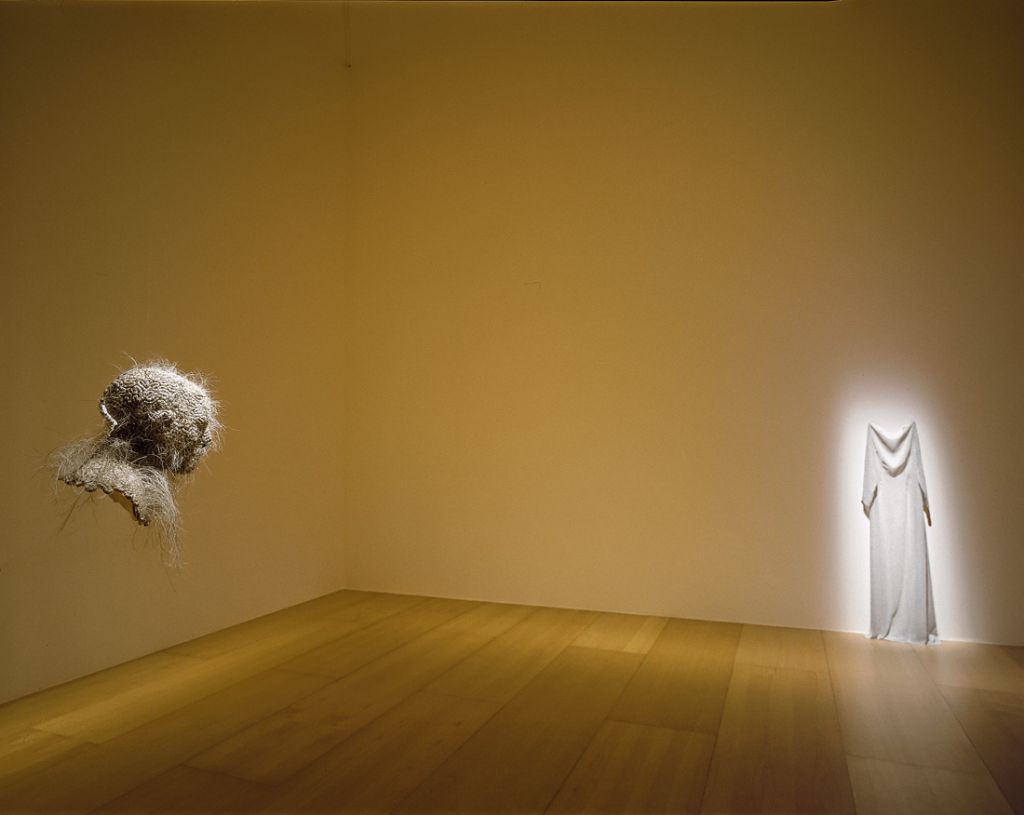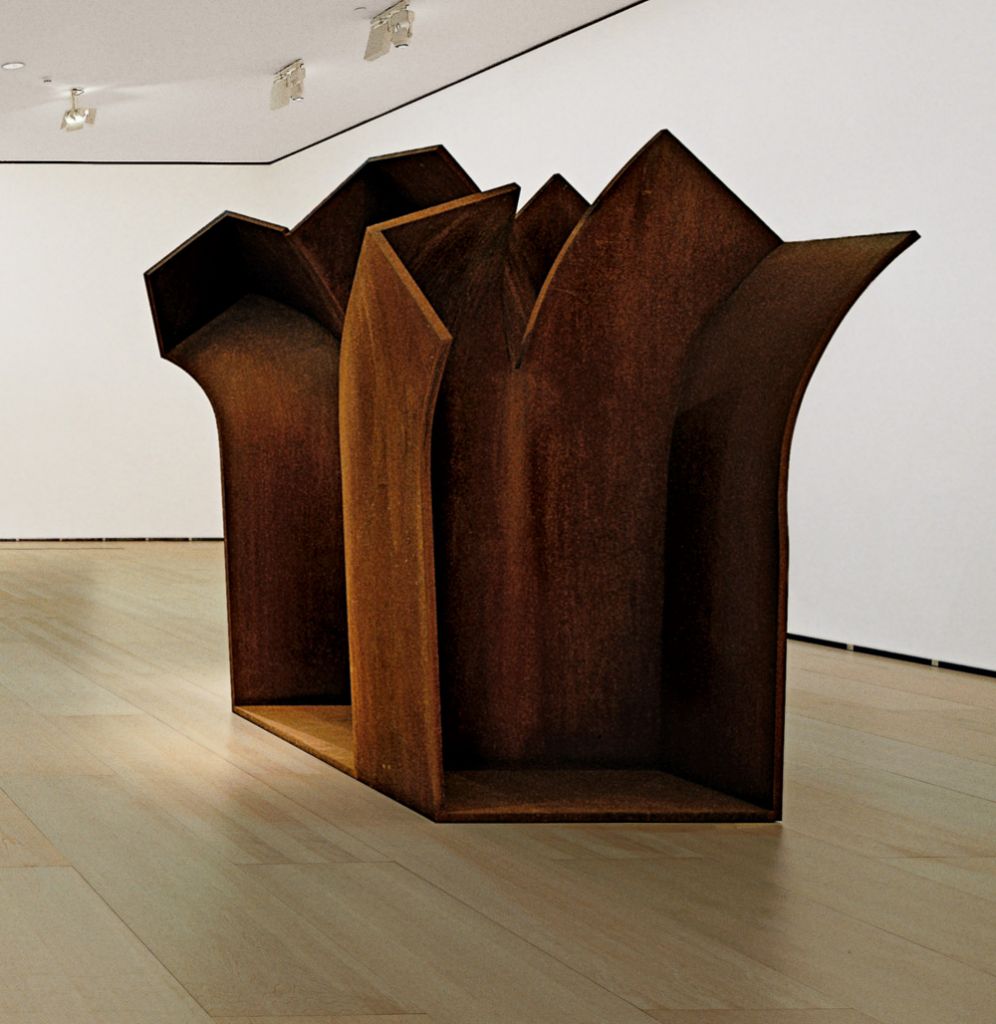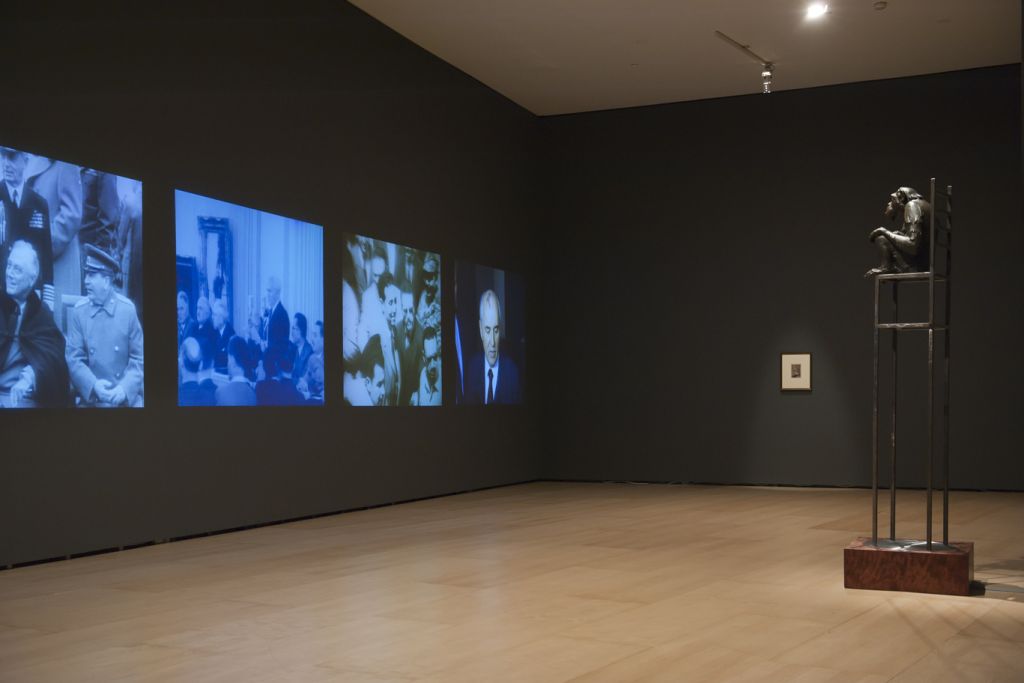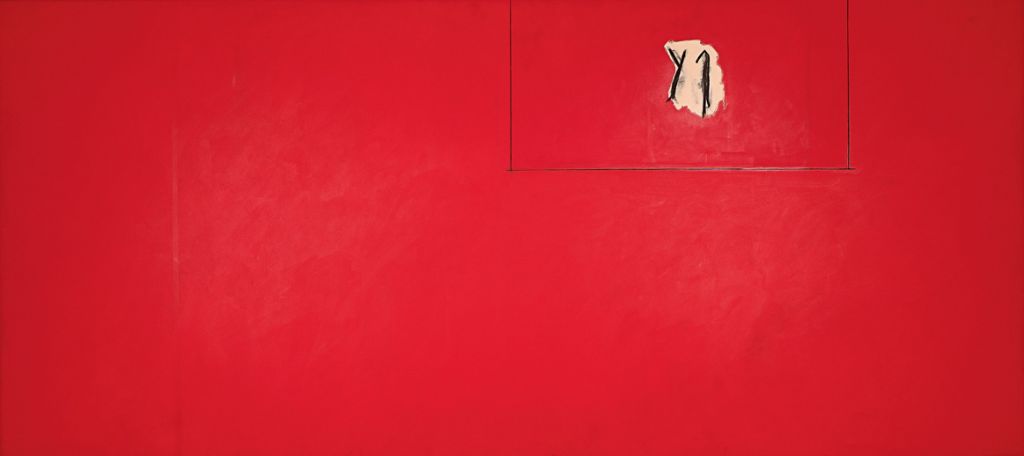Queen Mariana
2001Bronze172.5 x 130 x 90 cm
Manolo Valdés started out as part of one of the most important Pop manifestations in Spain under Franco's regime, the group Equipo Crónica, which he founded in 1964 with Rafael Solbes and Joan Antonio Toledo (though Toledo would leave the group soon after). Equipo Crónica made politically charged paintings based on the reuse of familiar art-historical elements. After the death of Solbes in 1981, Valdés began a solo career, branching into sculpture as well as continuing to paint.
The world of Valdés's sculptures and paintings is far removed from the aesthetic of American Pop and its collection of contemporary consumer goods. Valdés acts like an art historian, constantly compiling information from images of the past. His manipulation of icons—from works by Diego Velázquez and Henri Matisse to Rembrandt and Édouard Manet—is achieved through an act of decontextualization and iconic reactivation: Valdés begins with details and fragments of the paintings of the great masters and translates these into his own concrete vision, using burlap, sackcloth scraps, and assemblages of wood and iron. The anecdotes acquire individuality while simultaneously highlighting the essence of the whole from which they were taken. They do not lose their own personality but at the same time reveal that of the artist.
Valdés has continually turned to the paintings of Diego Velázquez as a source and site of investigation. In particular, since the early 1980s he has repeatedly reworked Velázquez's portrait of Queen Mariana (ca. 1652), producing both pictorial and sculptural versions in different materials and scales—a reworking that might be compared to Pablo Picasso's 1957 series of paintings paraphrasing Velázquez's Las Meninas. The Guggenheim Museum Bilbao's Queen Mariana of 2001 is larger than Valdés's comparable works of the 1980s, enabling him to develop the sculpture's surface texture. The change in morphology and meaning that occurs throughout Valdés's re-presentations of Velázquez's image can be seen in this work: The figure's overall form is preserved but it has become faceless, at odds with the very concept of a portrait. Translated into three dimensions, rendered in bronze, and presented in isolation, the icon is a detail become whole, containing references to its original context and yet possessing a life of its own.
Source:
Kosme de Barañano. "Manolo Valdés." In Guggenheim Museum Bilbao Collection. Bilbao: Guggenheim Museum Bilbao; Madrid: TF Editores, 2009.
Original title
Queen Mariana
Date
2001
Medium/Materials
Bronze
Dimensions
172.5 x 130 x 90 cm
Credit line
Guggenheim Bilbao Museoa






